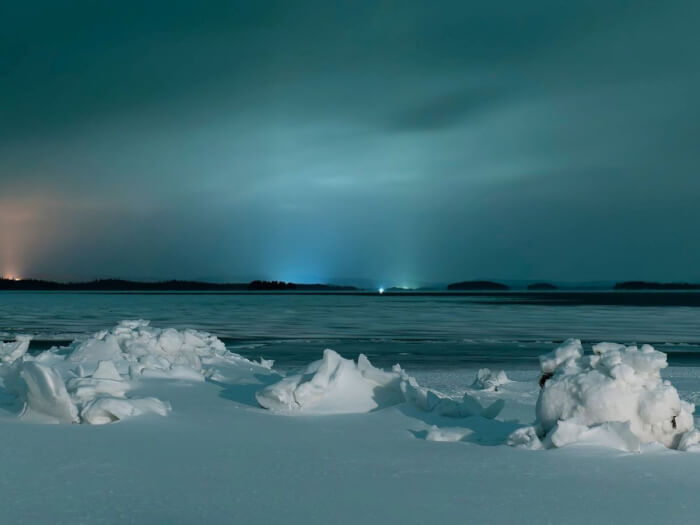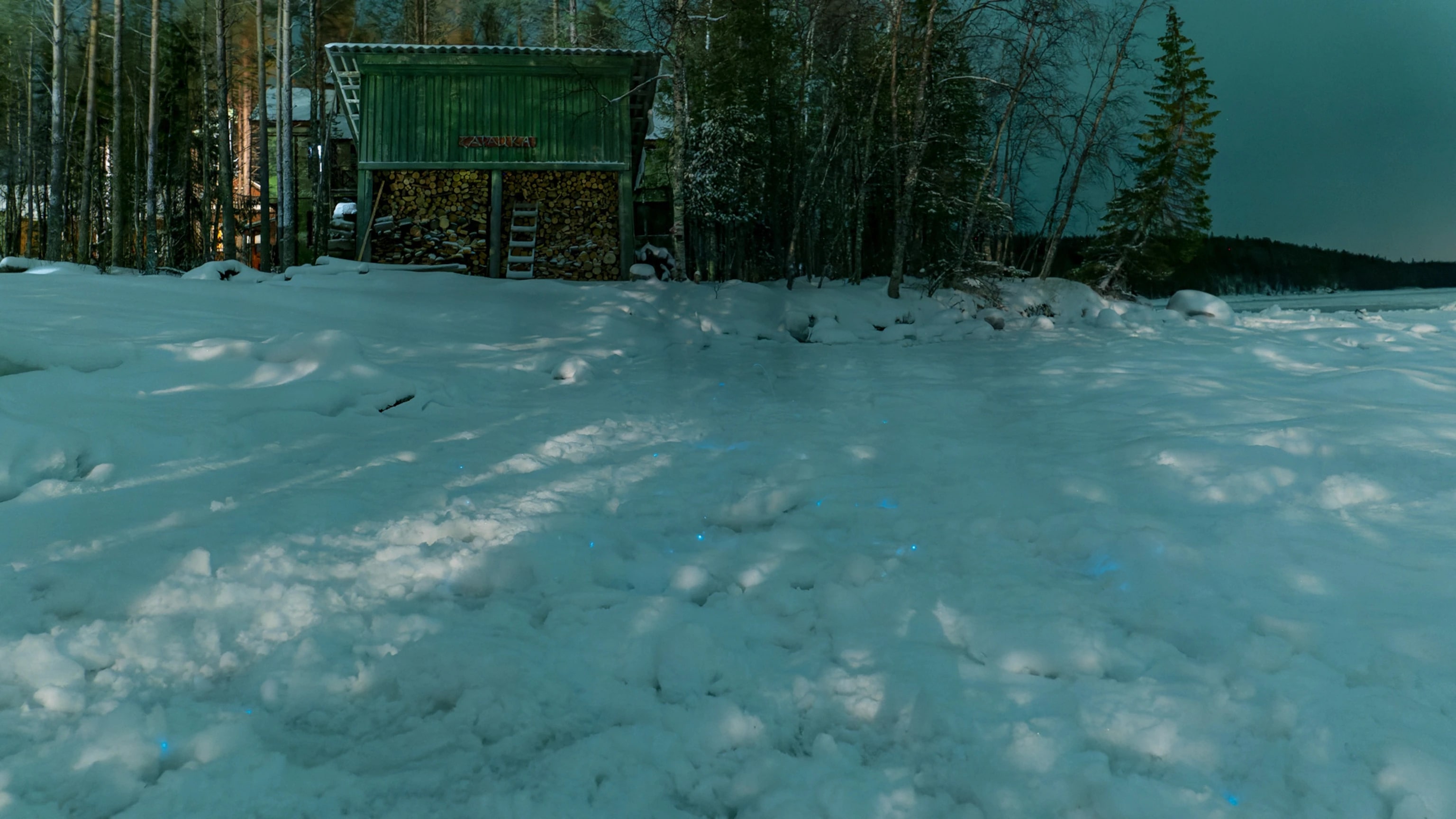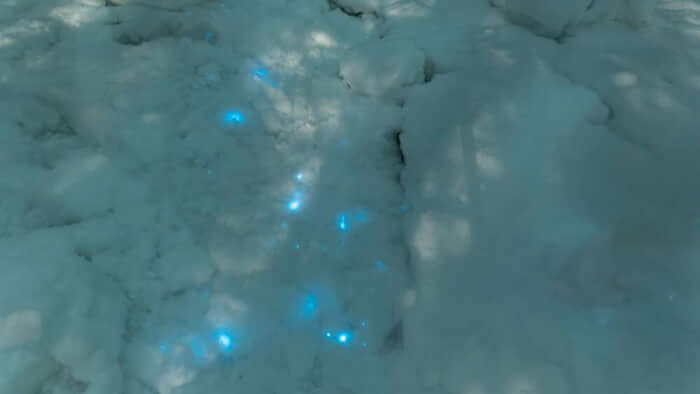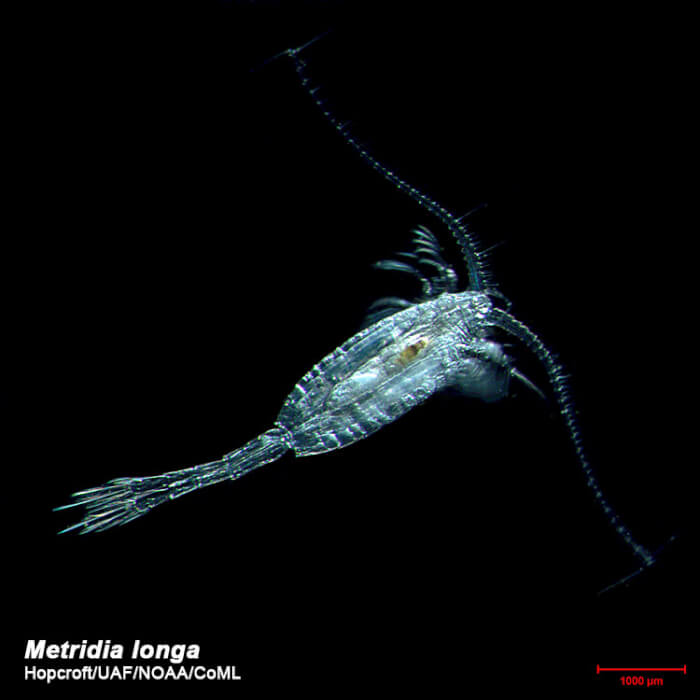The Mysterious ‘Glowing Snow’ In The Arctic, Russia Is Attracting Scientists' Interest
Russia is home to a lot of unique and wonderful things, and apparently, this list even includes the eerie blue glowing snow.
Accompanying Emelianenko were Mikhail Neretin, the son of a molecular biologist working at the same remote field station, and two dogs.
Even the dogs left a trail of light as they run forward, and when Neretin bent down to scoop up a handful of snow, squeezing it in her hand, she only made it glow brighter.
To document her discovery, Emelianenko also invited Alexander Semenov - a photographer of the research station to capture the glowing snow layers.
To find out what made the snow in the White Sea glow, Emelianenko took some snow samples back to the research station and discovered Metridia longa, a self-luminescent copepod several millimeters long, inside the samples. The species of Metridia longa is commonly found in the Arctic and surrounding waters, as well as the North Atlantic and Pacific Oceans.
These creatures are commonly found farther in the ocean at depths of 80 to 300 feet during the day, but only a few feet at night, when they can cause eye-catching bioluminescence on beaches.
This glowing snow has never been seen before at the Russian biological station, even though it has been open for 80 years. Ksenia Kosobokova, an expert on arctic marine zooplankton at Russia’s Academy of Science in Moscow, says the rare phenomenon could be the result of the copepods being pushed ashore by currents into the snow.
H/T: National Geographic
 Source: White Sea Biological Station
Source: White Sea Biological Station
Accompanying Emelianenko were Mikhail Neretin, the son of a molecular biologist working at the same remote field station, and two dogs.
 Source: White Sea Biological Station
Source: White Sea Biological Station
Even the dogs left a trail of light as they run forward, and when Neretin bent down to scoop up a handful of snow, squeezing it in her hand, she only made it glow brighter.
To document her discovery, Emelianenko also invited Alexander Semenov - a photographer of the research station to capture the glowing snow layers.
 Source: White Sea Biological Station
Source: White Sea Biological Station
To find out what made the snow in the White Sea glow, Emelianenko took some snow samples back to the research station and discovered Metridia longa, a self-luminescent copepod several millimeters long, inside the samples. The species of Metridia longa is commonly found in the Arctic and surrounding waters, as well as the North Atlantic and Pacific Oceans.
These creatures are commonly found farther in the ocean at depths of 80 to 300 feet during the day, but only a few feet at night, when they can cause eye-catching bioluminescence on beaches.
 Source: Arctic Ocean Diversity
Source: Arctic Ocean Diversity
This glowing snow has never been seen before at the Russian biological station, even though it has been open for 80 years. Ksenia Kosobokova, an expert on arctic marine zooplankton at Russia’s Academy of Science in Moscow, says the rare phenomenon could be the result of the copepods being pushed ashore by currents into the snow.
H/T: National Geographic
Share this article
Advertisement